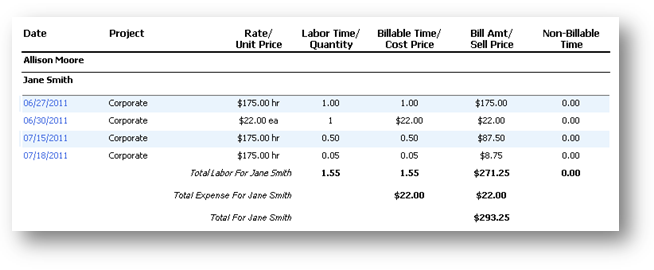I’ve recently come across David Freeman’s articles about moving to the cloud. Freeman admits it’s not a black and white issue when deciding between traditional software and software as a service (SaaS). He sees it’s all about functionality. Depending on the company’s needs, either one is a viable choice. What I got out of it was the following:
Again, this is not all black and white where you can’t keep your traditional QuickBooks software for your accounting while moving to Google Docs for your data analysis. Businesses make up their own rules. Technology allows this. Many of our customers use Bill4Time to keep track of their time as they work in the cloud, and then transfer their set invoice balances to QuickBooks. Others use Bill4Time strictly for time tracking and client management, as they use custom software for their invoicing needs.
Then there’s the question of an upfront fee versus a month-to-month fee. In the end, it’s all about cost and benefits. If the upfront cost is affordable and you don’t plan on switching to a newer version, then perhaps this is the best fit for you. The month-to-month expense only makes sense if:
- It buys you time so you can pay as you go rather than have a large up-front expense.
- The total monthly fee is well absorbed into the monthly generated revenue.
- You intend to use it for a limited time.
- You are test-driving software.
What I find fascinating in all of these case studies that Freeman presents, is that every one of those companies who chose the cloud-based software route reported some transitional time. They all admitted there were a few bumps and difficulties along the way, but in the end it was worth the time and effort to move in this new direction. It shows that businesses are willing to keep up with technology, as long as the long-term benefits out-weigh the invested costs of time and money.
One of the only risks Freeman pointed out was Internet connection. However, with this day and age of internet technology, smart phones, and Wi-fi access at almost any coffee shop or McDonalds around the corner, it’s an assumed risk when you use the Internet on a daily basis.
But cloud-based companies should pay attention to the avoidable risks that customers assume when trying out their software. It would be a wise investment for a SaaS company to:
- Provide a user manual
- Invest in technical support to accept and quickly return phone calls and emails
- Update your FAQ pages on a regular basis to include answers to new questions
 At the very end, Freeman addresses the data security issue. I’m assuming the shortness of that section shows how comfortable people really are with the cloud. With all of our email messages accumulating through the years, I’m sure there’s been more than one email there that contained sensitive material in that long list of archived emails. Freeman points out that cloud-based customers “felt satisfied that their cloud providers were doing at least as good a job as the owners themselves could in keeping data safe.” That’s definitely a statement worth noting! We’ve come a long way from the time when PayPal first surfaced.
At the very end, Freeman addresses the data security issue. I’m assuming the shortness of that section shows how comfortable people really are with the cloud. With all of our email messages accumulating through the years, I’m sure there’s been more than one email there that contained sensitive material in that long list of archived emails. Freeman points out that cloud-based customers “felt satisfied that their cloud providers were doing at least as good a job as the owners themselves could in keeping data safe.” That’s definitely a statement worth noting! We’ve come a long way from the time when PayPal first surfaced.
I look forward to more of Freeman’s articles on the subject of moving in the cloud. I believe it’s an inevitable movement with this current economy of businesses reducing their costs and software providers optimizing their distribution.



